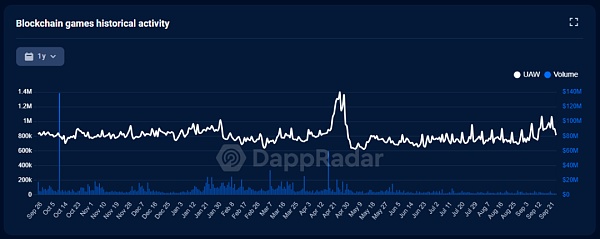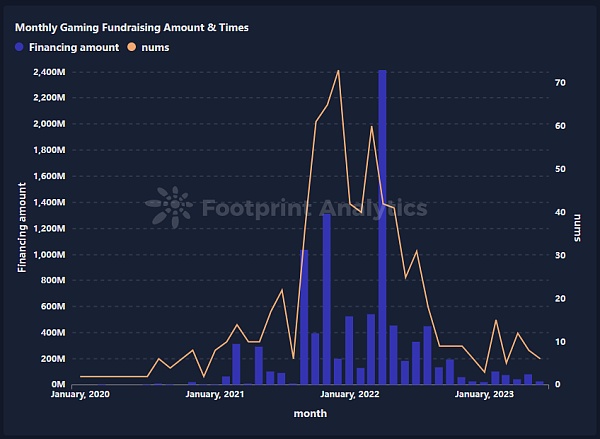Head Warehouse Research Report MMORPG Blockchain Game Big Time
Head Warehouse Report MMORPG Blockchain Game Big TimeBig Time is a large multiplayer online role-playing game (MMORPG) built on the Ethereum platform, with a leading team and financing in the industry. Currently, the game is still in the internal testing phase and has basically formed the prototype of an MMORPG, as well as completed the conceptual construction of a sustainable economic mechanism for the game. The game has a good user experience and a certain degree of playability. Despite the current bear market, the blockchain gaming track still maintains a good scale. After Big Time opens up with zero barriers, it is possible to attract more players.
Project Overview
Big Time is a large multiplayer online role-playing game (MMORPG) built on the Ethereum platform. Currently, the game is still in the internal testing phase and has basically formed the prototype of an MMORPG, as well as completed the conceptual construction of the game’s economic mechanism.
From the team’s perspective, the Big Time team has a solid background in gaming and cryptography, and the core members have experience in developing large-scale games or working in large game companies.Compared to the first research report in May 2022, there have been some changes in the core team members of Big Time, and the departure of the product director and the game economy model design director may have had a certain impact on the development and delivery of the game, with subsequent work being taken over by other experts deeply involved in the gaming industry. In addition, as Big Time Studios is a game studio that operates completely remotely worldwide, it will also have a certain impact on the timely delivery of the game.
- These DAOs are changing Japan.
- Aside from speculation, how do we understand the core narrative of Ethscriptions, ESC VM?
- a16z Social Media Operation Experience What Did We Do Right to Increase Fans by 100,000 in 1 Year from 0?
In terms of funding, Big Time raised funds through primary market financing and NFT sales, with an estimated financing of over $90 million, which is enough to support the development of a AAA-level game. After the game goes online, the project team can continue to operate sustainably by selling game resources.
In terms of the core game mechanism, Big Time has borrowed from the mature role and growth design of MMORPGs, but its free job change system will greatly enrich players’ game experience.However, this also poses requirements for the balance adjustment of the game team, as a low job change threshold means that if the abilities of a certain profession are particularly outstanding, it will squeeze the survival space of other professions, thereby affecting the playability of the game.
In terms of the game’s economic mechanism, the design of Big Time is very clever, ensuring that the in-game economy has a certain degree of elasticity on a stable basis, and both free players and paid players can have a rich game experience. However, such an economic mechanism also places high demands on players’ strategies for allocating resources within the game, and players need to invest certain resources to explore their appropriate position in the game.
From the actual gaming experience, the game already has a certain degree of playability, but it will require more iterations in the future to improve the game’s graphics and gameplay mechanisms.
In terms of game threshold, the game does not currently have high hardware requirements, but players need to meet certain requirements to participate in the preseason.
In terms of project development, the game’s current operations and development pace are slower than expected, but the game already has a group of highly sticky core players. In the future, after the zero-threshold opening of Big Time, it may attract more players.
In terms of the track, since entering the bear market, although the number of players and trading volume in the blockchain gaming track has decreased to a certain extent, the core group of blockchain gamers still maintains high stickiness, and the overall development progress of the track has not been significantly affected, with a large number of new games still being developed and operated. Once the overall macro environment improves, the blockchain gaming track still has room for imagination. At the same time, based on the different types and development stages of the blockchain gaming track, we believe that games similar to Big Time, which partially put core assets on the chain and are rooted in Web2 games, and have sufficient development capabilities and operational experience, will have greater development potential in the future.
1. Overview
1.1 Project Introduction
Big Time is a large-scale multiplayer online role-playing game (MMORPG) built on Ethereum. The game is currently in the internal testing phase, and it has basically formed the prototype of an MMORPG and completed the conceptual construction of the game’s economic mechanism.
1.2 Basic Information
2. Project Details

2.1 Team
According to the official website, the core team of Big Time currently has 38 members, and according to LinkedIn, the Big Time team currently has 89 employees, an increase of 22 employees compared to the initial version of the research report in early 2022. From the beginning, Big Time recruited a team of industry veterans from top game companies such as Epic Games, Blizzard, EA, and Riot.
The introduction and changes of core team members are as follows:
Ari Meilich, CEO, former co-founder and CEO of Decentraland, previously worked as a market research analyst at Charles River Ventures, a Silicon Valley venture capital fund, and co-founded the big data company Benchrise, serving as CEO, with rich experience in venture capital and data analysis.
Matt Tonks, CTO, 2004.01-2005.05 served as the chief programmer of COR Project; 2005.05-2007.10, worked as a software engineer at Electronic Arts; 2007.10-2012.7, served as a senior AI programmer at Epic Games; 2016.01-2020.08, served as the technology director at Drifter Entertainment; 2012.03-present, co-founder of BitMonster. Matt Tonks has been dedicated to the game industry for the past 18 years and has extensive experience in game development.
Thor Alexander, CPO, served as Development Director at Epic Games from 1999.04 to 2006.12; Founder and Editor of MMP Game Development from 2002.10 to 2005.02; Product Management Director at Metaplace, Inc. from 2006.12 to 2008.11; Executive Producer at Zynga from 2008.11 to 2011.12; Founder and CEO of Lucky Puppy, LLC from 2012.03 to 2017.08; Vice President of Product at Decentraland from 2018.11 to 2020.04. Thor Alexander is an OG in the traditional gaming industry with more than 25 years of experience in game production. He has been involved in multiple successful game projects and has rich entrepreneurial experience. Currently, there is no information available on the official website, and it is highly likely that he has left the company. His work has been taken over by Brian Chu.
Brian Chu, Product Management Supervisor, entered the gaming industry in 2007 as a Developer Marketing Intern at Salesforce. In 2008, Brian joined Deloitte Consulting as a Senior Consultant, providing consulting services to multiple companies in the interactive entertainment, software, and mobile information industries. In 2009, Brian joined Zynga as the Chief Product Manager for the CityVille project. He then served as Vice President of Product at Identified in 2012. In 2013, Brian joined Blizzard Entertainment as the Global Brand Management Director, responsible for global brand marketing strategies, budgets, and execution for “Heroes of the Storm” and “StarCraft II.” In 2016, Brian served as the Director of Product at Rocket Games, which was acquired by Penn Interactive Ventures in April 2017. In 2017, Brian became the Director of Product Management at EA, and later in 2019, he joined Epic Games in the same position. In April 2022, Brian joined Big Time as a Product Management Supervisor and still holds the position.
Michael Migliero, CMO, served as a Product Marketing Assistant at Akamai Technologies from 2007 to 2008; Co-founder and CEO of Fractional Media, an advertising services company, from 2012.12 to 2018.05; DSP Director at Machine Zone (MZ) from 2015.05 to 2018.05.
Ken Harsha, Chief Animator and Creative Director, has over 31 years of experience in specialized animation, television animation, and game production. He has served as an Art Director, Production Designer, Director, Writer, Story Artist, Storyboard Artist, and Visual Development Artist, and has gained considerable reputation in the US entertainment industry. Ken Harsha has participated in multiple works of Disney, DreamWorks, and Warner Bros., provided art direction for multiple series of Call of Duty games, served as an Art Director, Producer, Production Designer, and Film Director at Electronic Arts for over 5 years, and managed the Concept Art Department at Treyarch for over 8 years.
Daniel LianGuaiez, Director of Game Economy Model Design, served as a Product Manager at VisusTV from 2009 to 2015; Industrial Engineer at IBM Brasil; Customer Manager at Transcend Information; Business Development Manager at Gresso Miami, mainly responsible for corporate product-related work. From 2015 to 2015.06, he served as an Apple SPO Specialist; from 2015.06 to 2020.12, he served as Pricing Manager and Publishing Intelligence Manager at Blizzard Entertainment; from 2020.12 to 2021.08, he served as Senior Manager of Business Finance and Operations at Activision. In addition to working at Big Time, Daniel LianGuaiez also serves as the Director of Game Economy Model Design at WorldsLianGuairk Studios. According to LinkedIn information, Daniel has left the company in February 2022 and has been succeeded by Khaled Alroumi, Director of Game Monetization and Economy.
Khaled Alroumi, Director of Gamification and Economy, entered the gaming industry in 2010 and co-founded several gaming companies in Kuwait and Dubai. He developed the game “War Front: Battle for Toria”. In 2021, Khaled Alroumi joined the blockchain game Illuvium as a game system and economy designer. In September 2022, Khaled Alroumi joined Big Time as the Director of Gamification and Economy and has held the position since then.
Aaron Smith, Art Director, previously worked at companies such as Rogue Entertainment, Nerve Software, and Epic Games. He is also a co-founder and game artist of Bitmonster, Inc. Aaron Smith is an artist with over 20 years of experience in the gaming industry, specializing in concept art, 3D character and environment modeling, and has over 17 years of experience with Unreal Engine. He is a seasoned professional in the gaming industry.
Martin Sweitzer, Chief Engineer, from June 1998 to May 2000, worked as a software developer at Trilogy. From November 2000 to October 2001, he worked as a programmer at Sony Online Entertainment. From January 2002 to June 2004, he co-founded Sigil Games Online. From 2004 to 2017, he worked as a senior game programmer at BrickHouse Games, Epic Games, and Squanch Games. He is also a co-founder of Bitmonster, Inc. Martin Sweitzer is an experienced professional in the gaming industry with over 20 years of game development experience.
TJ Stamm, Chief Designer, started working in the gaming industry around 2000. He previously worked as a designer at Electronic Arts, Infinity Ward, and other companies, serving as a producer, designer, and artist for multiple games. During his 6-year tenure at Infinity Ward, he was mainly responsible for weapon design and in-game balance for the Call of Duty: Modern Warfare and Infinite Warfare series.
Cedric Fleury, Chief Designer, started working in the gaming industry in 2006. He worked as a level designer for several games, including Wolfenstein, at Threewave, EA, and SE. In 2016, Cedric Fleury joined Ubisoft and participated in the development of Far Cry 4, mainly responsible for the open world environment design of the game. He has also worked as a senior level designer for WB Games and EA on multiple projects. In May 2022, Cedric Fleury joined Big Time as the Chief Designer.
The CEO of the Big Time project is Ari Meilich, who is also the former co-founder and CEO of Decentraland. In addition, most team members have rich industry experience in the traditional gaming industry and have worked for major companies. From the team’s resume, it can be seen that the team has professional game development experience and has participated in the design and development of many top games, including League of Legends, Fortnite, God of War, Call of Duty, and Overwatch. Compared to the first research report in May 2022, there have been few changes in the core team members of Big Time, but the departure of the Product Director and Game Economy Model Design Director may have had some impact on game development and delivery, and the subsequent work has been taken over by other experts in the gaming industry. In addition, since Big Time Studios is a fully remote game studio worldwide, it will also have a certain impact on game development.
2.2 Funds
2.2.1 Funding Part
On May 12, 2021, Big Time Studios announced the completion of a $21 million funding round, which will be divided into two parts. The first part, totaling $10.3 million, was led by FBG Capital, with participation from North Island Ventures, Digital Currency Group, DFG, OKEx Blockdream Ventures, Alameda Research, LD Capital, YBB Foundation, Circle Financial, and Sound Ventures created by Ashton Kutcher. In addition, Big Time Studios also completed a $11 million funding round, which will be used to invest in game companies willing to use related NFT technology.
2.2.2 NFT Sales Part
In addition to the funding part, Big Time also generated significant revenue through multiple in-game NFT prop sales activities, as detailed below:
1) Binance NFT Market First Sale
On July 22, 2021, Big Time launched its first NFT Drop on the Binance NFT market. This activity was divided into four parts, as shown in Table 2-1 below:
Table 2-1 Binance NFT Market First Sale Overview
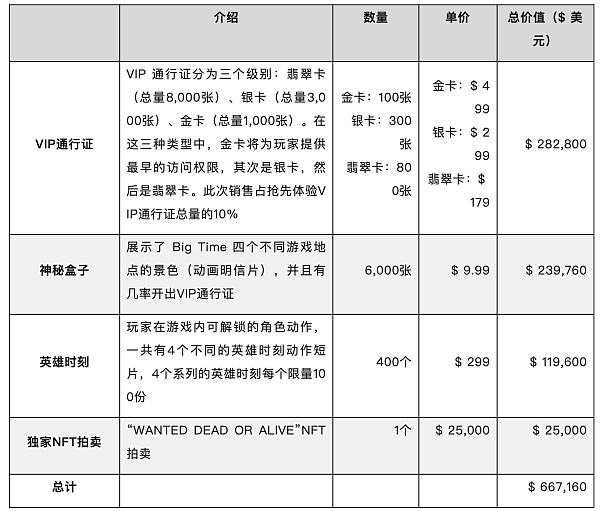
In summary, all of Big Time’s first sales activities on the Binance NFT market were sold out, with a total NFT value of $667,160.
2) Binance NFT Market Sale LianGuairt 2
On August 13, 2021, Big Time launched the second round of sales activities on the Binance NFT market. This activity was divided into two parts, as shown in Table 2-2 below:
Table 2-2 Binance NFT Market Sale LianGuairt 2 Overview
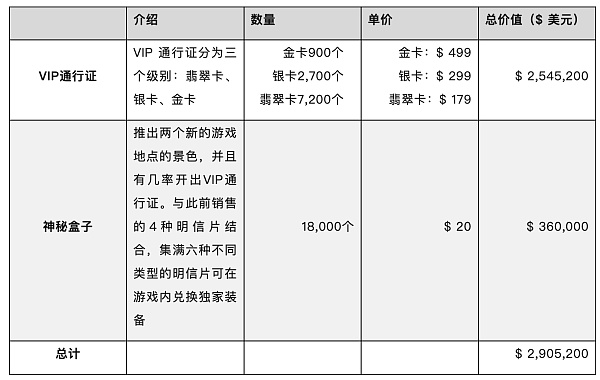
Based on the information available, the second round of sales activities on the Binance NFT market by Big Time had a total NFT value of approximately $2,905,200.
3) SLianGuaiCE NFT Sales
On December 21, 2021, Big Time launched SLianGuaiCE NFT sales.
Table 2-2 SLianGuaiCE NFT Market Sale Overview (December 2021)

SLianGuaiCE NFT is a component of Big Time’s individual metaverse, similar to the “land” in other metaverse projects. SLianGuaiCE NFT comes in various sizes and rarities. The rarer and larger the SLianGuaiCE, the more functionalities it supports.
This is the first sale of SLianGuaiCE NFT, and the team will sell 60,000 SLianGuaiCE NFTs, accounting for 10% of its total supply, as detailed below:
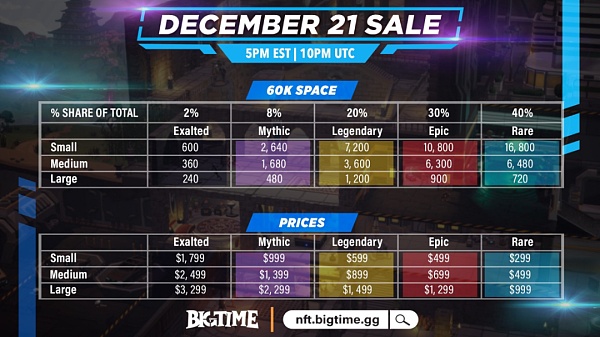
Figure 2-1 SLianGuaiCE NFT Sales Details
Combining the two tables in Figure 2-1, we can calculate that Big Time sold a total of SLianGuaiCE NFT worth $38,148,000 in the first SLianGuaiCE NFT sale.
4) Mystery Box Sales
Table 2-3 Mystery Box Market Sales (February 2022)
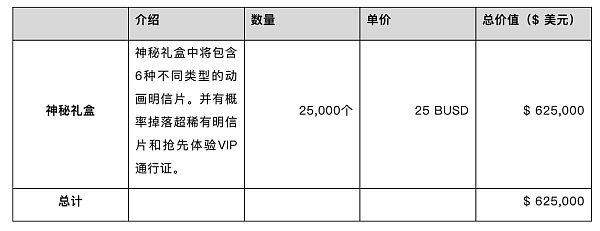
On February 17, 2022, Big Time launched a mystery box sale on the Binance NFT market. In this sale, a total of 25,000 mystery boxes were sold, each with a chance to drop 6 different types of animated postcards, and a small chance to drop ultra-rare postcards. Additionally, the mystery boxes have a chance to drop a VIP pass for an exclusive experience.
The price per mystery box in this sale is 25 BUSD, with a total value of $625,000.
5) Exalted SLianGuaiCE Special Sale
Table 2-4 Exalted SLianGuaiCE NFT Market Sales
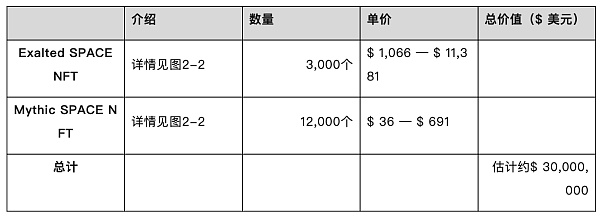
On March 24, 2022, Big Time launched the Exalted SLianGuaiCE NFT sale.

Figure 2-2 Exalted SLianGuaiCE Special Sale Details
In this Exalted SLianGuaiCE special sale, Big Time sold a total of 3,000 Exalted SLianGuaiCE NFT (0.5% of the total SLianGuaiCE NFT) and 12,000 Mythic SLianGuaiCE NFT (2% of the total SLianGuaiCE NFT), as shown in the figure (right).
The selling price for Mythic SLianGuaiCE NFT varied from $36 to $691, compared to the previous SLianGuaiCE NFT sale held on December 21, 2021; while for Exalted SLianGuaiCE NFT, it increased from $1,066 to $11,381. Such a significant increase has drawn criticism from some community members, but it hasn’t hindered the popularity of Big Time.
However, in this Exalted SLianGuaiCE special sale, the team did not disclose the specific number of large, medium, and small-sized SLianGuaiCE NFT sold, making it difficult for us to calculate how much funds were raised in this event.
Comparing the volume and pricing of a previous SLianGuaiCE NFT sale, the editor conservatively estimates that if all the SLianGuaiCE NFT in this event are successfully sold, the team will raise at least $30 million, for reference only.
6) Open Loot Holiday Sale (Christmas holiday, Spring Festival holiday)
Table 2-5 Open Loot Holiday Sale (Christmas holiday, Spring Festival holiday) Market Sales
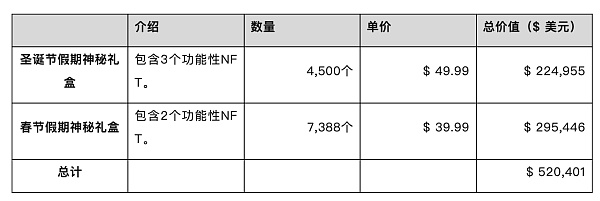
During these two Open Loot holiday sales events, Big Time sold 4,500 and 7,388 mystery boxes respectively. These boxes will include three types of Utility Collectibles (functional NFTs) that can be used in SLianGuaiCE: Armory, Furnace, and Time Guardian, with proportions of 45%, 45%, and 10% respectively. The Time Guardian will be used to create Hourglass components, and the Hourglass components will be used to generate BIGTIME tokens. The Armory and Furnace will use BIGTIME tokens to create some skin-type NFTs, which can be traded on Open Loot in the future.
Each mystery box during the Christmas holiday will contain 3 functional NFTs, while the mystery box sale during the Spring Festival holiday will only contain 2 functional NFTs. However, the drop rates for Armory, Furnace, and Time Guardian in the Spring Festival holiday mystery box have been adjusted to 33.3% each. In addition, the drop rate for high-rarity functional NFTs in the Christmas holiday mystery box is much higher than that in the Spring Festival holiday mystery box.
The Christmas holiday mystery box will be priced at $49.99 USD, and the Spring Festival holiday mystery box will be priced at $39.99 USD. Users can purchase up to 100 mystery boxes at a time. Selling all the mystery boxes will bring the team nearly $52,000 in revenue.
7) Game Guild Subscription
Currently, Big Time has established partnerships with over 20 game guilds, including YieldGuild, Merit Circle, Avocado Guild, Loudgg, Neo Tokyo, Black Pool, Polkastarter, YGG Sea, ReadyPlayerDAO, and 3D Gamers Guild DAO. Most of the guilds have purchased corresponding NFT assets in Big Time’s game, but the specific amounts have not been disclosed yet. In addition, the Web3 community OpenDAO has also partnered with Big Time and purchased over $5 million worth of SLianGuaiCE.
In summary, from multiple NFT sales events since its inception, Big Time has conservatively estimated revenue of approximately $72,865,761 USD (not a complete statistic, the actual situation is more and not less. Previously, there were voices in the community claiming that Big Time has made billions of dollars in profit from multiple NFT sales events, but this information has not been confirmed and is for reference only).
In addition to the previous $21 million financing completed by the team, Big Time currently has a total of approximately $93.87 million in its treasury. Even considering that Big Time is benchmarking AAA games, which typically have development costs ranging from tens of millions to even hundreds of millions of dollars in this field, the current stage of Big Time’s treasury can be said to be quite sufficient, enough for the project to be developed and operated for a considerable period of time in the early stage.
2.3 Code
Big Time is built on Ethereum and uses Procedurally Generated Goodness (PGG) technology to expand off-chain scalability. The overall framework is similar to most chain games on the market, where game assets are put on the chain and the game itself runs on off-chain servers. The specific code repository is not open source.
2.4 Product
Big Time is a massively multiplayer online role-playing game (MMORPG) inspired by time travel.
Generally speaking, as a subcategory of RPG games, MMORPGs should first meet several core elements of RPG games:
1) Character elements: Players will need to choose or play a certain role in the game, selecting the abilities and attributes that the character possesses.
2) Interactive elements: The game generally includes built-in systems such as combat, quests, NPCs, maps, and loot, which provide feedback based on player actions.
3) Growth elements: Growth elements are usually the key to RPG games. Common growth elements in RPG games are divided into internal growth mechanisms and external growth mechanisms. Internal growth mechanisms, such as level and skill mechanisms, are usually considered internal growth mechanisms. Players can improve their abilities through mechanisms such as battles and exploration, without relying on external resources. External growth mechanisms, such as equipment and items, are generally considered external growth mechanisms. Players can obtain corresponding character abilities by accumulating external resources such as gold coins. An excellent RPG game will strive for a balance between internal and external growth mechanisms, providing players with a smoother gaming experience.
What sets MMORPGs apart from other types of RPG games is the difference in gaming experience.
For example, in the setting of Japanese-style RPGs, more emphasis is placed on guiding the main storyline. Players essentially play a character in a script set by the game creator. The game usually has a single linear ending, and even in multiple endings, there is usually a clear path to achieve them. Differentiated player experiences are supplemented by side quests, but overall, they do not deviate too much from the main storyline of the game itself.
American-style RPGs, derived from TRPGs (Tabletop RPGs, such as Dungeons & Dragons), on the other hand, relatively weaken the influence of the main storyline and introduce more random elements to emphasize the impact of player actions on the game. During gameplay, American-style RPGs can provide players with more differentiated experiences through the accumulation of interactive elements, allowing players to create their own game memories. The game itself usually designs multiple branching endings as feedback to player actions.
MMORPG basically follows the design concept of American RPG, which emphasizes interactive experience compared to one-way experience. Generally, there is only a short introductory plot to help players establish a basic worldview. The concept of “ending” is not even set for the game. The main game experience for players is built on the interaction with game elements. In addition, MMORPG also emphasizes the interaction between players, and can even be said to be a kind of online social game to some extent.
In the following text, we will first introduce the world view setting of the game, and then make some analysis from the three core elements of the game, gameplay mechanisms, and other aspects.
2.4.1 Big Time Game Story Background
Note: This chapter introduces the game story background, which is not the focus. Readers who are not interested can skip it directly.
Every MMORPG game has its unique game background and storyline, and Big Time is no exception. The story background of Big Time is set in the future human world, where a mysterious force is threatening the balance of the universe. Time has been distorted, different eras collide with each other, and the space-time of the entire universe is severely damaged. Survivors have been wandering to the last refuge of the universe called “Big Time’s End”.
However, due to the influx of survivors from different time and space, the small asteroid of BIG TIME’S END soon becomes overwhelmed. At this time, a solution appears (seemingly out of thin air, perhaps supported by unknown mysterious forces behind it). A person named Canard Cincade creates the LianGuairadox Corporate company and produces batches of small robots called Clockies to maintain the order of the space-time world, and quickly restores BIG TIME’S END to normal operation.
At the same time, LianGuairadox Corporation also started selling a pocket universe called BIGTIMESHARES (similar to VR virtual worlds in cyberpunk) with infinite possibilities. Whether you want to ride dinosaurs in the American Wild West era or meet robot samurais in feudal Japan, LianGuairadox can make it happen. Many people are attracted to it to escape from reality. As time goes by, the residents of BIG TIME’S END begin to discover that these small robots occasionally exhibit abnormal or even rampage behavior, disrupting the lives of the residents. At the same time, rumors start to circulate privately in BIG TIME’S END that LianGuairadox Corporation is the mastermind behind the destruction of universal peace. LianGuairadox Corporation denies this incident firmly on the one hand, and on the other hand, launches a large-scale robot model with tremendous destructive power called Guardian XL. Canard Cincade wants to use robots to control the entire world and use large robots for city patrol work to monitor the operation of the entire city. In response to this, an organization dedicated to protecting “time” called Evermore Academy steps forward. The principal of the academy is one of the smartest scientists in history, Albert Einstein. Einstein assembles a group of heroes to solve the crisis facing the universe.
In Big Time, players take on the role of a time traveler summoned to the edge of the universe by Einstein. In the current version of the game’s storyline, players need to investigate LianGuairadox Corporation, uncover Canard Cincade’s intentions, and thwart Canard Cincade’s plans. More game plot content will be unlocked in future updates.
As an RPG game, Big Time utilizes multiple time-space narratives, allowing game characters to travel through different time periods to achieve certain narrative purposes. By contrasting different time periods, the game enriches its content and has deeper narrative potential.
2.4.2 Roles and Growth Elements
As an RPG game, the attributes, professions, and growth elements of characters are the focus of its game mechanics.
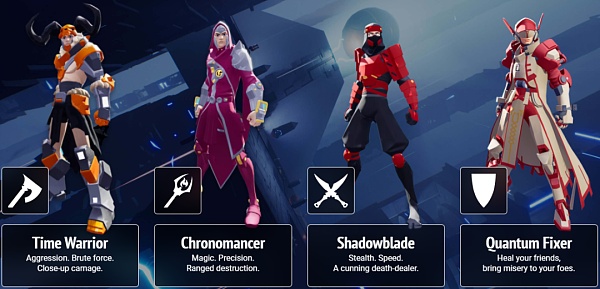
Figure 2-3: Big Time game characters
Currently, there are four types of character professions in the Big Time game, as shown in Figure 2-3:
• Time Warrior: Skilled in close combat, suitable as a tank; signature skills include Whirlwind Slash and Invincible Roar. • Chronomancer: Ranged mage, capable of AoE damage; signature skills include Fireball, Blizzard, and Time Stop. • Shadowblade: Possesses high-speed movement and stealth abilities, suitable for single-target damage; signature skills include Stealth, Backstab, and Bomb Trap. • Quantum Fixer: Similar to a priest, able to heal teammates, suitable as a support; signature skills include Healing, Summon Turret, and Energy Recovery.
The four professions in Big Time are essentially based on the traditional Western RPG concept of “warrior, mage, priest, and rogue,” which makes it easier for players to quickly adapt to the game mechanics and choose their preferred playstyle. In addition to the four professions, Big Time also incorporates a job change mechanism. Players can use “Pocket Watches” items of different professions to change their profession. Furthermore, after the v0.26 update, when players reach level 30, they can choose to change into two new professions: Techblade and Battlemancer. Each has a completely new set of skills. Techblade combines the tank and mage roles, while Battlemancer combines the rogue and priest roles.
In terms of growth elements, the internal growth mechanism includes leveling up and skill point systems. In Big Time, players gain attribute points and skill points each time they level up. Attribute points can enhance the basic attributes of game characters, allowing players to equip better weapons and equipment. This is similar to the gameplay of traditional RPG games. Skill points include active skills and universal talents. Active skills are related to the chosen profession, while universal talents are not profession-specific and are always effective.
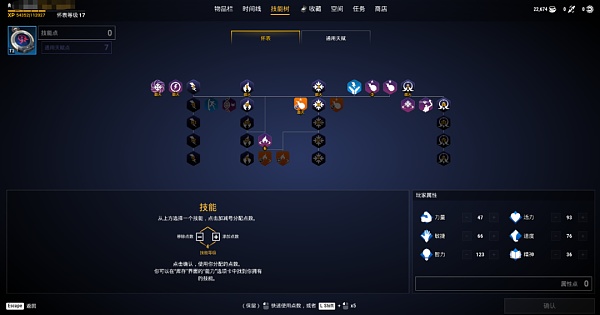
Figure 2-4 Upgrade and Point Addition System
The currently available external growth mechanisms include the equipment system and the item system.
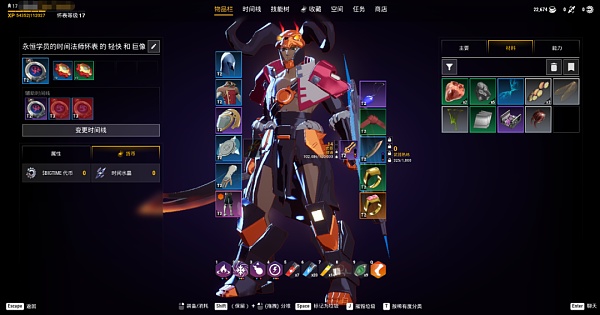
Figure 2-5 Equipment and Item System
The equipment system currently includes gears, armor, shields, weapons, jewelry, and backpacks. Gear items can be equipped on a watch to grant players additional abilities or item rewards. Weapons are equipped directly by players and currently include various types such as two-handed axes, one-handed hammers, two-handed hammers, one-handed swords, two-handed swords, dual swords, and two-handed staffs. The weapons that players can equip are linked to their class type, level, and base attributes. Weapons can enhance the player’s base attributes and have a mutually restrictive relationship with the defense types of the attack targets. Armor includes helmets, shoulder pads, chest armor, gloves, and leg armor, as well as shields and jewelry. These equipment items, similar to weapons, can also enhance the player’s base attributes. The backpack is used to store player items and provides additional inventory slots for placing items, thus assisting players in the game.
The current equipment system has built-in rarity and skin mechanisms. Equipment with higher rarity often has a higher attribute bonus limit. The skin system is similar to the costume mechanism in DNF and can be crafted in the arsenal and furnace of SLianGuaiCE. Skins themselves do not affect the attributes of the equipment, and players can equip the skins they currently own in the collection column above the UI. The above equipment or skins can be obtained through monster hunting, synthesis, participating in activities, or purchasing corresponding gift packs. NFT skins can be traded as NFTs on Open Loot. We will explain the more specific equipment forging mechanism in the NFT and SLianGuaiCE sections.
Regarding the item system, the game has many items, including energy potions, health potions, team teleportation potions, town teleportation scrolls, and the Tree of Life. These items can meet the player’s needs for replenishing character resources and fast movement, and are generally obtained as loot from monsters.
From the perspective of character elements and growth elements, Big Time has basically borrowed the character and growth design from mature MMORPGs, but its free job change system will greatly enrich the player’s gaming experience. However, this also places requirements on the balance adjustment of the game team, because the lower job change threshold means that if the abilities of a certain job are particularly outstanding in the future, it will squeeze the survival space of other jobs, thereby affecting the playability of the game.
2.4.3Interactive Elements
The core gameplay mechanisms of a game can be distilled into its interactive elements. Currently, the interactive objects in the game include plot, maps, scenes, and players. Both paying players and free players can experience the same game content in terms of characters and growth elements, but paying players can have a more enriching gaming experience in terms of interactive elements.
In version 0.27, players will be able to play on a whole map, which includes elements such as towns, forests, swamps, snow mountains, towers, and dungeons. The interactive objects include NPCs, monsters, ores, teleportation gates, and other players.
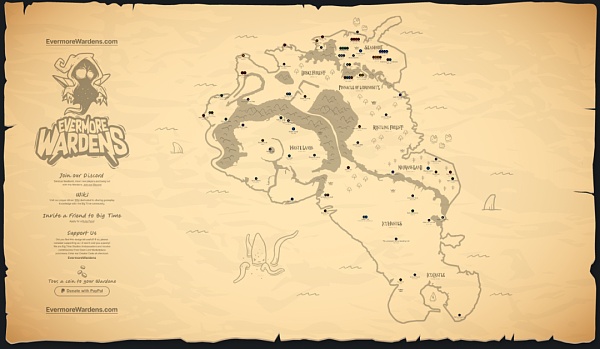
Figure 2-6: BigTime Game Map
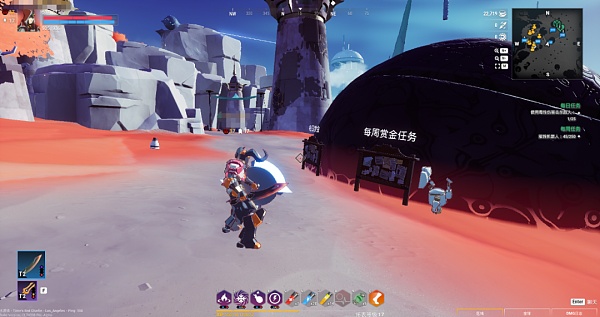
Figure 2-7: Interactive Elements
Players can interact with NPCs through dialogues to complete item transactions, learn skills, initiate plots, and receive quests. Monsters and ores mainly correspond to the combat and gathering mechanisms of the game. Players can perform combo attacks by using the left and right mouse buttons, or use number keys to release corresponding skills or items to attack enemies.
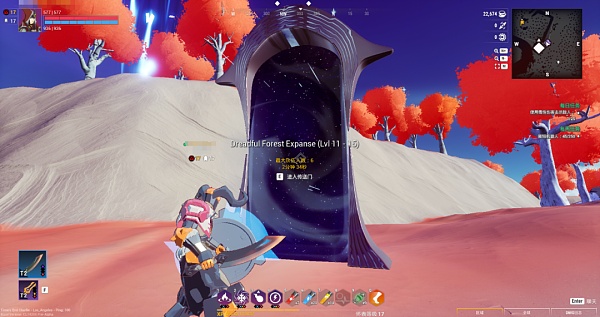
Figure 2-8: Instance Teleportation Gates
Teleportation gates correspond to the instance mechanism of the game. Each instance has a maximum limit of 6 players and will suggest a recommended level. After completing the small tasks in the team, players can enter the final boss room to obtain rich rewards by defeating the boss. The prizes that instances can provide in future official versions will include pocket watches, gold coins, time crystals, BIGTIME tokens, equipment, skin fragments, lucky bonus chips, NFTs, and other items. In addition to normal instance teleportation gates, there is also a highly rewarding instance called the Honor Teleportation Gate, which significantly increases the drop rate of rare items in instances. Players need to meet the entry requirements of skin-type NFTs before entering the high-reward instance. The entry requirements may include elements such as the type, theme, season, and color of the skin-type NFTs, and then pay BIGTIME or time crystals as the entry fee. In addition, players can also provide additional bonuses for high-reward instances through lucky wheel slots.
Currently, the interaction mechanisms with other players in the game include teaming up, player expressions, and chatting functions. It is expected that features such as friends and guilds will be opened in subsequent version updates.
2.4.4Resource Elements
In the top left corner of the game’s main UI map, there will also be three types of resource elements displayed: gold coins, time crystals, and BIGTIME tokens. Gold coins can be obtained through monster hunting, quest completion, trading loot, or mining, and can be used to purchase ordinary equipment and items in the game.
Time crystals are the main in-game currency used for in-app purchases. They are difficult to obtain through normal gameplay and players can only purchase them from Big Time through Open loot. Time crystals are not on-chain assets and once purchased, they are bound to the account and cannot be traded on the market. Currently, the price for 500 time crystals is approximately $5, and the price for 13,500 time crystals is approximately $100. Time crystals are mainly used to activate various functional NFTs and require a certain amount of time crystals to use the arsenal, furnace, and time guardian. In addition, time crystals can also be used to purchase some auxiliary props, such as additional time hourglass equipment slots or pay for the entrance fee of certain Prestige Portals.
BIGTIME tokens are the most important core asset in the game. They are the final piece of the game’s economic mechanism. We will introduce this token in 2.4.7.
In addition to the three resource elements that can be directly seen in the UI interface, there are four other important resource elements related to functional NFTs in the game: Cosmetic Shards, Workshop Mod Chips, Prestige Portal Mod Chips, and Cosmetic Scraps. Workshop Mod Chips and Prestige Portal Mod Chips are collectively referred to as Bonus Roll Chips, which drop in game activities and are not on-chain assets, so they cannot be traded. They are mainly used to exchange for functional NFTs and the lucky wheel of Prestige Portals.

Figure 2-9 Workshop Mod Chips and Prestige Portal Mod Chips
All four of them will drop from monsters in dungeons. Cosmetic Shards are mainly used to synthesize refined cosmetic shards and then create or upgrade cosmetic NFTs in the arsenal or furnace. Cosmetic Shards are seasonal drops, with new cosmetic shards released for each season to synthesize cosmetic NFTs for that season. Workshop Mod Chips are mainly used to exchange for functional NFTs and can also be used to purchase the lucky wheel (Bonus Roll) of functional NFTs. Prestige Portal Mod Chips are mainly used to exchange for the lucky wheel of Prestige Portals. Cosmetic Scraps are mostly obtained by destroying cosmetic NFTs and are mainly used to exchange for Workshop Mod Chips and Prestige Portal Mod Chips.
2.4.5 NFTs
There are two types of NFTs in the game. One is the cosmetic NFTs mentioned in the equipment section, and the other is functional NFTs. The difference between the two is that cosmetic NFTs are products, while functional NFTs are production tools. The former can enhance the audio-visual performance of in-game items such as armor and weapons to improve the player’s gaming experience and showcase their status. Players who own cosmetic NFTs will also have the qualification to enter exclusive scenes or Prestige Portals to experience exclusive content. To ensure game balance, cosmetic NFTs will not affect the original game values of in-game items. The latter is mainly used to produce cosmetic NFTs and BIGTIME tokens to sustain the game’s economic cycle.
There are two types of skin NFTs, craftable skin NFTs and non-craftable skin NFTs. The former can be created using functional NFTs, while the latter can only be randomly dropped in the game. Currently, there are three types of functional NFTs: the Furnace, the Arsenal, and the Time Guardian, all of which can only be used after connecting to the personal metaverse SLianGuaiCE. In the Furnace and the Arsenal, players need to invest certain resources, such as BIGTIME tokens, time crystals, and skin fragments, to complete the creation and upgrade of skin NFTs. Three low-rarity craftable skin NFTs will be able to be exchanged for higher-level craftable skin NFTs, which will become an important part of the seasonal competition in the future.
The Time Guardian is the most complex functional NFT in the game, and it will be used to produce BIGTIME tokens. Players need to first invest time crystals to create hourglasses, and then equip the hourglasses and use time crystals to charge them in order to produce BIGTIME tokens. The hourglasses are consumable resources, and when they are depleted, players need to use time crystals in the Time Guardian to recharge them in order to continue producing BIGTIME tokens.
In every activity of functional NFTs, including refining, crafting, and upgrading skin NFTs, players can choose to use the Lucky Wheel. The Lucky Wheel can be obtained by exchanging Workshop Chips and can provide additional bonuses to the action through a lottery. The level of the functional NFT determines the available slots of the Lucky Wheel, and multiple different Lucky Wheel bonus effects can be stacked in one action. Players can obtain functional NFT experience points in all activities of functional NFTs, and when the experience points reach the upgrade criteria, they can pay time crystals to upgrade the functional NFT. After upgrading, the functional NFT will have higher crafting efficiency, as well as additional Lucky Wheel slots and bonus effects.
In addition to the above functions, functional NFTs also have different types. Different types of functional NFTs have different color classifications and special bonus types. In addition, the type of functional NFT is also linked to its rarity, with the top three rarities all being Triumph types.
The Furnace currently has 10 types:
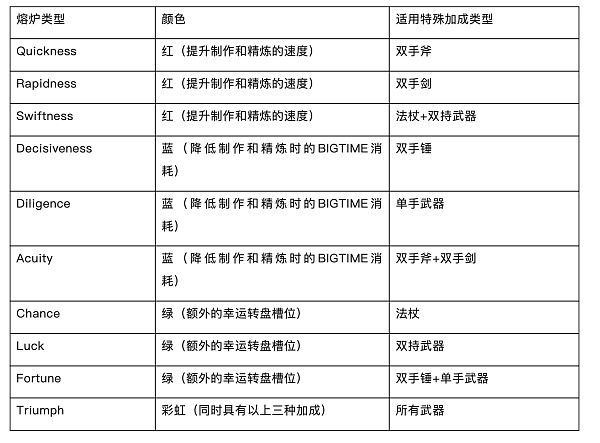
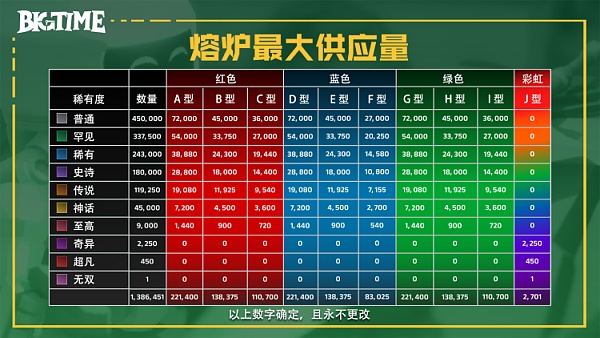
Figure 2 – 10 Maximum supply of different types and rarities of Furnace
The Arsenal currently has 10 types:
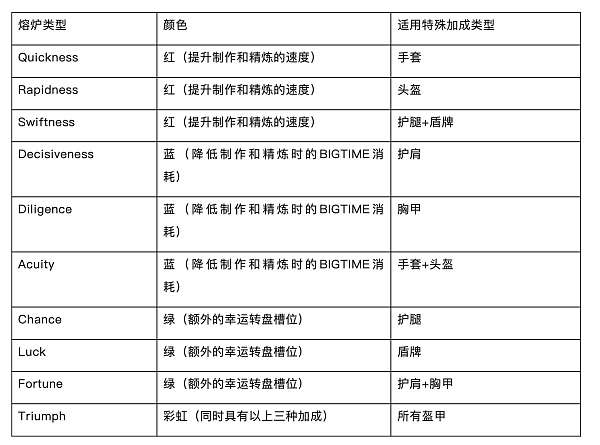
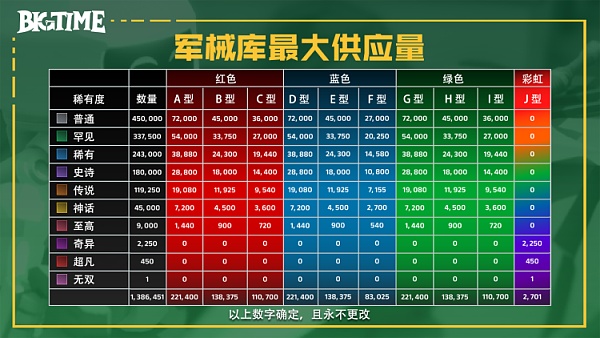
Figure 2 – 11 Maximum supply of different types and rarities of Arsenal
Unlike the Furnace and the Arsenal, the Time Guardian currently only has 4 types:


Figure 2-12: Maximum Supply of Time Guardians of Different Types and Rarity
In addition to the individual bonuses that each functional NFT possesses, players can also obtain set bonuses based on the various types of functional NFTs in SLianGuaiCE. The rewards of set bonuses are similar to individual bonuses and can be stacked. Red increases the speed of production and refinement, blue reduces the BIGTIME consumption during production and refinement, and green adds additional slots to the lucky wheel.
Finally, the official emphasizes that all functional NFTs will have a fixed and unchangeable issuance quantity. However, new skin-type NFTs will be launched on a seasonal basis, and the maximum issuance quantity of skin-type NFTs for each season will be determined at the beginning of the season.
2.4.6SLianGuaiCE
SLianGuaiCE is an important game content that distinguishes between paying players and free players, similar to the concept of “land” in other metaverses. In the game, players can summon their own metaverse portal on the map by clicking specific buttons and then enter it. Both free players and paying players can have their own personal metaverse in the game, but only players with SLianGuaiCE can perform some special operations in the expanded space of SLianGuaiCE.
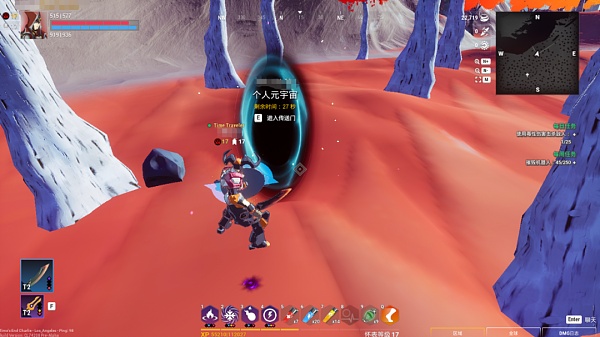
Figure 2-13: Personal SLianGuaiCE Portal
SLianGuaiCE currently has four functions:
1) Expand personal metaverse. The design of SLianGuaiCE space is like building blocks, each SLianGuaiCE has an entrance and multiple exits. Players need to create their own personal metaverse through the entrance and then connect to other SLianGuaiCEs or functional NFTs (arsenal, furnace, and time guardians) through the exits. SLianGuaiCEs of different sizes have different numbers of exits.
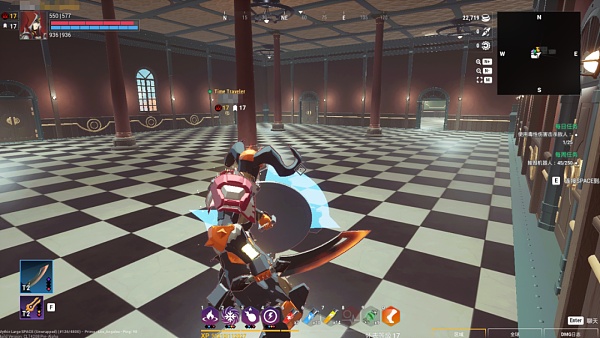
Figure 2-14: Inside SLianGuaiCE
2) Use functional NFTs. The arsenal, furnace, and time guardians can only be used when connected through SLianGuaiCE. 3) Place skin-type NFTs. Players can display skin-type NFTs obtained during the game process in their personal metaverse or make some personalized modifications. 4) Obtain broken hourglasses. Broken hourglasses can be used to produce BIGTIME tokens in one go. 5) Integrate social functions. Players will be able to invite other players to visit their personal metaverse and interact with them.
SLianGuaiCE can currently only be obtained through purchase. And SLianGuaiCE of different sizes and rarities have fixed maximum issuance:
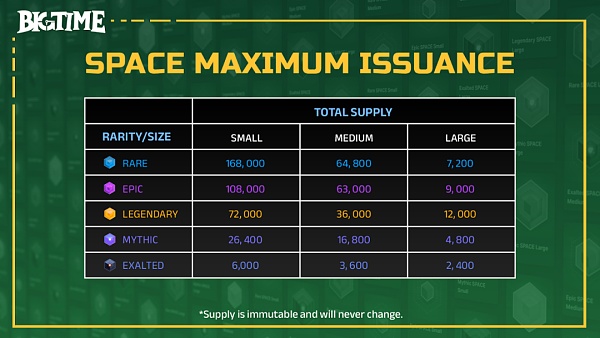
Figure 2-15 Maximum issuance of SLianGuaiCE of different rarities and sizes
The size of SLianGuaiCE affects the number of exports, which in turn affects the number of components SLianGuaiCE can connect to.
Except for the Exalted rarity, SLianGuaiCE comes in three sizes: small, medium, and large, with 2, 3, and 5 exits respectively. The Exalted rarity has one more exit than other rarities of SLianGuaiCE.
In addition to affecting the number of exports, rarity also limits the functional NFTs that can be connected to SLianGuaiCE. High-rarity functional NFTs can only be connected and used on high-rarity SLianGuaiCE. The rarity of SLianGuaiCE also affects the rarity and drop rate of broken Hourglasses, and the size of SLianGuaiCE affects the number of broken Hourglasses dropped, thus affecting the supply of BIGTIME tokens.
In the future, Big Time will also introduce an SLianGuaiCE leasing system to allow more players to experience the richer game content provided by SLianGuaiCE.
2.4.7 Game Economic Mechanism
The game’s economic mechanism, built by Big Time, revolves around the BIGTIME token.
The BIGTIME token has the following main uses: 1) Refining or creating and upgrading skin NFTs in the forge and arsenal. 2) Paying the entrance fee for the Honor Portal.
The total supply of BIGTIME tokens is 5,000,000,000, which is theoretically generated entirely within the game through gameplay, rather than being issued and there are no token sales targeting investors.
There are three specific ways to obtain BIGTIME tokens:
1) Cracked Hourglasses are randomly dropped by individual metaverse SLianGuaiCE. As disposable items, they can be equipped to produce BIGTIME tokens. Cracked Hourglasses, like Time Crystals, are off-chain assets tied to player accounts and cannot be traded. 2) Hourglasses can be crafted from Time Crystals in the functional NFT Time Guardian and then equipped. Time Crystals can continue to be spent to charge the Hourglasses and produce BIGTIME tokens. 3) BIGTIME tokens can be purchased on the market or obtained through team airdrops.
The generation mechanism of BIGTIME determines that the supply of BIGTIME tokens will be related to the allocation of in-game resources for the majority of the time, ensuring that the entire game’s economic model has both stability and elasticity. As producers of BIGTIME within the game, the main resources they need to invest are Hourglasses and Time Crystals. The price of Time Crystals is fixed and denominated in USD, while the price of Hourglasses fluctuates with market supply and demand. The former ensures that if the output of BIGTIME is lower than the cost, producers will reduce token supply, thereby stabilizing the game economy. The latter ensures that the output of BIGTIME is correlated with market activity, that is, the actual demand of players, thereby increasing the elasticity of the game economy.
In addition to the BIGTIME token, assets that can be traded on Open Loot include skin fragments, SLianGuaiCE NFTs, decorative NFTs, and functional NFTs. Therefore, there are two paths for players to participate in the complete economic cycle of Big Time.
1) Defeat monsters and clear dungeons to obtain skin fragments for trading on the market. 2) Defeat monsters and clear dungeons to obtain non-craftable skin-type NFTs for trading on the market.
The above are the two paths in which free players can participate in the game’s economic cycle. Due to the low drop rate of NFTs and rare resources in regular dungeons, free players need to invest a lot of time and energy. Trading skin fragments will be one of the few ways for free players to participate in the complete economic cycle of the game. However, since on-chain assets do not significantly affect the balance within the game, free players can still experience most of the fun of the game without involving on-chain assets.
For paying players, how to participate in the game’s economic cycle is more strategic. It is necessary for each paying player to determine the proportion of resources, such as time crystals, BIGTIME tokens, and skin fragments, to produce more skin-type NFTs and BIGTIME tokens for trading using SLianGuaiCE and functional NFTs. The existence of mechanisms like the Glory Portal further enriches the gaming experience of paying players and increases their participation in the game.
Overall, the game economy mechanism of Big Time is cleverly designed, ensuring a stable economic cycle within the game with a certain degree of flexibility. It also ensures that both free and paying players can have a rich gaming experience. However, such an economic mechanism also places high demands on players’ strategies for allocating resources within the game, requiring players to invest certain resources to find their suitable position within the game.
2.4.8 Airdrop
The official Big Time will airdrop to early buyers of game NFTs and early participants in the game to thank them for their support.
There are two types of airdrops. One is the airdrop of mystery gift boxes, with a total quantity of 153,000. Each gift box contains a functional NFT with different drop rates depending on its rarity. The more NFTs a user account has, the higher the rarity and corresponding asset value, or the more game tasks and dungeons completed, the higher the value of the airdrop they can receive.
The other type is the airdrop of BIGTIME tokens. According to the current airdrop plan of Big Time, the total token airdrop amount will reach 2.6% of the total supply, which is 130,000,000 BIGTIME tokens. During the preseason, the official will airdrop 97,500,000 BIGTIME tokens and use the remaining tokens for other airdrops and marketing plans. The aforementioned airdrops will take place at the end of the first three months after the preseason starts, and the amount of the airdrop will be based on the real-time leaderboard of points in each user account. The points in a user account will be calculated based on the following actions: 1) In-game leveling up. The higher the level reached by the player, the higher the point reward. 2) Use of practical NFTs. Actions that can earn points include refining cosmetic fragments, crafting cosmetics, crafting hourglasses, charging hourglasses, and dismantling broken hourglasses. 3) Participation in the Glory Portal. 4) Inviting friends. Inviting players will receive 50% of the invited player’s points as a reward.
Simply put, the more players participate in Big Time, the more collectibles they will have, and the higher the probability of receiving airdrops and the more abundant the prizes they will receive. However, the specific plan for airdrops may be further adjusted by the Big Time team in the future.
2.4.9 Season competition and rewards
After the public beta, Big Time will update major versions every 90 days as a season. Each major version update will include the following content: 1) Brand new fixed quantity of skin-type NFTs, including craftable and non-craftable skin-type NFTs. 2) New season skin shards and refined skin shards. 3) New special events and game content.
In addition, there will also be a skin-type NFT synthesis competition in each season, which is the Unrivaled Challenge. Only one skin NFT of Unrivaled (Unique) rarity will appear in each season. Players who create unique skin-type NFTs in advance will win the season’s competition. According to Big Time’s skin rarity mechanism, synthesizing a skin of Unrivaled rarity will consume 19,683 common future rarity skins. Big Time may launch more activities to encourage players or guilds to participate in this competition.
2.4.10 Game experience
• Game configuration
Since Big Time is designed to be a traditional AAA game, it has certain hardware requirements. The current minimum system requirements are as follows:
Graphics card: GeForce GTX 1060 / Radeon Rx 580 or higher
Memory: 8GB RAM
API interface: DirectX 11 or higher
Processor: Intel Core i5 4430 / AMD FX 6300
Storage space: 23GB
Note: The above specifications may be adjusted based on the development of future games.
Currently, although Big Time cannot be compared with traditional AAA games from major companies, in terms of blockchain games, Big Time exceeds the rough and hastily produced blockchain games on the market in terms of game graphics, gameplay, sound effects, and systems. It can reach the level of a qualified independent game in the traditional gaming field.
However, due to the certain hardware requirements and operations required by Big Time, it will inevitably limit the participation of a certain group of people for games that require a significant amount of time and energy. Therefore, the key lies in whether the game can successfully stand out, that is, whether the game is outstanding, the built-in economic incentive measures, and other factors that can attract both blockchain players and players from the traditional gaming field.
• Game Experience
In terms of the overall game testing results, the v0.27 version of Big Time already has the prototype of an MMORPG game.
Firstly, the gameplay mechanics of the game have been established, but not all systems have been fully implemented in the current beta test, such as tokens and guilds, which will appear in subsequent updates. However, the dungeons and main storyline challenges that can be experienced smoothly have reached the basic standard of a normal game.
Secondly, in terms of the audio and visual performance of the game, they are generally above the passing line. The visual presentation is slightly better than expected, but the overall color tone is monotonous and the elements are scarce, which can cause fatigue after playing for a long time.
In terms of the overall game progress, it takes players at least 30 hours to experience all the elements of the current version. The size of the game itself is moderate, but more storyline and dungeons are still to be provided in future updates.
• Payment System
If players want to purchase NFT assets on Big Time, they only need to log in to the official Big Time page through their Google account, then bind their corresponding phone number or Google Authenticator, and finally bind their bank account or add USDC to make purchases. Of course, experienced users who are familiar with on-chain transfers can also create a new encrypted wallet for transactions.
Note: Currently, Big Time Marketplace only supports USDC payments, and it is expected to adopt ETH for payments in the future.
The NFT purchasing process on Big Time is relatively convenient and does not require players to learn how to use a digital wallet. They only need to log in with their Google account and bind their bank account to make purchases, which greatly reduces the entry barrier for users. It should be noted that on the Big Time NFT trading market, Open Loot, before making large deposits (exceeding $2,000 within 24 hours) or any withdrawal operations, the corresponding KYC authentication needs to be completed. Currently, one KYC authentication can only be bound to one account.
2.5 Technology
2.5.1 Procedural Content Generation (PCG)
Big Time is built on the Ethereum platform and uses Procedural Content Generation (PCG) to expand the off-chain scale.
Procedural Content Generation is a method that requires inputting feature parameters and basic materials, and then using a series of customized (or somewhat random) algorithms to generate game content in large quantities in real-time or offline.
As game developers are getting bigger and the trend of industrialization is becoming more obvious, the use of PCG has become mainstream in the game development industry in recent years. In game production, PCG technology has the following advantages: 1) It can greatly improve the production speed of game assets, reduce costs, and have a low error rate. This is very important for optimizing control over large-scale outsourced game projects. 2) PCG generates a huge number of resources, which allows for a large amount of innovation in gameplay by constantly generating random content, thus inspiring game designers’ imagination. 3) It can dynamically generate unlimited new content in limited disk space, saving disk space occupation and allowing players to repeatedly play newly generated levels. It can also be calculated offline to optimize game performance and provide players with a vast space for exploration.
Currently, many popular traditional PC games, such as “EVE,” “Horizon: Dawn,” “Red Dead Redemption,” “FarCry,” “GTA,” “Minecraft,” etc., are built using PCG underlying technology.
Big Time has built a massive game world for players through PCG technology, bringing more fun and playability, and increasing the exploration cycle of the game.
2.5.2 Vault Technology
In Big Time, one of the most groundbreaking integrated components is its patented Vault Technology.
According to the team, Vault Technology can help users reduce the management of external wallets, self-custody assets, and eliminate expensive on-chain transactions. Players can enjoy instant transaction settlement without setting up and managing their own encrypted wallets or spending network fees. The team achieves this goal mainly by storing Big Time’s game items in its off-chain Vault custody system.
In simple terms, Big Time has created a private database through Vault technology.
Big Time stores the created or purchased items in its own database through Vault. Technically, Big Time does not automatically mint NFTs on the blockchain, and NFTs and regular items can coexist, thus maintaining lower transaction costs. On the other hand, players can also transfer assets from off-chain to on-chain at any time.
In addition, Ari Meilich, CEO of Big Time, also pointed out that if there is enough demand for Big Time, the studio will design new ways for players to extract their assets and transfer them to any desired blockchain. This may mean that Big Time’s SLianGuaiCE in the game NFTs are likely to become cross-chain assets in the near future.
Summary:
From the team’s perspective, the Big Time team has a solid background in gaming and cryptography, with core members having experience in developing large-scale games or working in large game companies. However, compared to the first research report in May 2022, there have been some changes in the core team members of Big Time, and the departure of the product director and the director of game economic model design may have had some impact on the development and delivery of the game, with subsequent work being taken over by other experts deeply rooted in the gaming industry. In addition, since Big Time Studios is a game studio that operates completely remotely worldwide, it may also have a certain impact on the timely delivery of the game.
In terms of funding, Big Time has raised over $90 million through primary market financing and NFT sales, which is enough to support the development of a AAA-level game. After the game goes online, the project team can continue to sustain operations through the sale of game resources.
From the perspective of game core mechanics, Big Time has essentially borrowed the character and growth design from mature MMORPGs, but its free job change system will greatly enrich players’ gaming experience.However, this also poses requirements for the balance adjustment of the game team, because the lower job change threshold means that if the abilities of a certain profession are particularly outstanding, it will squeeze the survival space of other professions, thereby affecting the playability of the game.
From the perspective of game economy mechanics, Big Time’s design is very clever, which can ensure that the in-game economic cycle has a certain degree of elasticity on a stable basis, and also ensure that both free players and paying players can have a relatively rich gaming experience. However, such an economic mechanism also puts high demands on players’ strategies for allocating resources within the game, and players need to invest certain resources to explore their suitable positions in the game.
From the perspective of actual gaming experience, the game already has a certain degree of playability, but it will require more iterations in the future to improve the game’s visual performance and gameplay mechanics.
From the perspective of game threshold, the game’s hardware requirements do not appear to be high at present, but players need to meet certain requirements to participate in the preseason.
3. Development
3.1 History
Table 3-1 Big Time Major Events
|
2021.05.11 |
Big Time officially introduced the game demo on the blog for the first time |
|
2021.05.12 |
Big Time Studios completed a $21 million financing |
|
2021.07.22 |
Big Time launched its first NFT Drop on Binance NFT marketplace |
|
2021.08.13 |
Big Time started the second round of sales activities on Binance NFT marketplace |
|
2021.11.10 |
Big Time announced the initial version of the game token economic model. |
|
2021.11.11 |
Big Time announced partnerships with Yield Guild Games, Merit Circle, Avocado Guild, and other game guilds, which will participate in Big Time’s latest product SLianGuaiCE |
|
2021.12.02 |
Decentralized launch platform Polkastarter partnered with blockchain game company Big Time, including allowing Polkastarter Gaming Guild to participate in the early Beta testing of Big Time game; acquiring SLianGuaiCE NFTs; launching scholarships for Polkastarter Gaming Guild; educating trainers about Big Time gameplay; working together and other activities involving the two communities |
|
2021.12.17 |
Big Time announced a partnership with stablecoin issuer Circle to integrate Circle’s payment solutions. |
|
2021.12.21 |
Big Time started SLianGuaiCE NFT sales |
|
2022.02.17 |
Big Time launched a mystery box sales event on Binance NFT marketplace |
|
2022.03.24 |
Big Time started the Exalted SLianGuaiCE NFT sales event |
|
2022.04.14 |
Big Time announced the game’s opening, allowing Gold LianGuaiss holders to experience it first |
|
2022.05.06 |
Big Time updated to version 0.1, adding new game elements, new job skills, updating the game’s UI, adjusting game balance, fixing bugs, and making other changes. |
|
2022.05.12 |
Big Time announced that the mystery box can be experienced first. |
|
2022.05.16 |
Big Time updated to version 0.12, updating the game’s UI, adjusting game balance, fixing bugs, and making other changes. |
|
2022.06.06 |
Big Time updated to version 0.13, adding new game elements, updating the game’s UI, adjusting game balance, fixing bugs, and making other changes. |
|
2022.07.20 |
Big Time updated to version 0.2, adding new types of missions, updating the game’s UI, adjusting game balance, fixing bugs, and making other changes. |
|
2022.07.28 |
Big Time announced the launch of the blockchain gaming infrastructure Open Loot. |
|
2022.11.11 |
Big Time updated to version 0.23, adding new boss battles, new job skills, updating the game’s UI, adjusting game balance, fixing bugs, and making other changes. |
|
2022.11.26 |
Big Time released part of the game’s economic model. |
|
2022.12.17 |
Big Time updated to version 0.24, launching personal metaverse, weapon slots, and public activity system, adding new types of missions, new job skills, updating the game’s UI, adjusting game balance, fixing bugs, and making other changes. |
|
2022.12.19 |
Big Time won the GAM3 Annual Best Game Award hosted by Polkastarter Gaming. |
|
2022.12.23 |
Big Time released a new limited edition of 4,500 NFT blind boxes. |
|
2023.01.20 |
Big Time announced that starting from February, players will receive airdrops based on their account points every month. |
| <
3.2 Current Situation Currently, Big Time is still in the internal testing phase. As of September 1, 2023, the game has been in internal testing for over a year and has been updated to version 0.27. Multiple major versions have been tested, but due to limited testing qualifications, the actual online player count of the game is relatively low, with most servers being idle. 3.2.1 Social Media Scale Table 3-2 Big Time Social Media Data
As of October 9, 2023, Big Time has a large number of followers and high interaction on its social media platform. The community communication is frequent, with most content focusing on game mechanics. Game live streaming data is good, with over 2,000 streamers broadcasting Big Time, totaling over 40,000 hours of live streaming. It has surpassed Axie Infinity to become the web3 game with the most streamer broadcasts. The total watch time of the game has also exceeded 480,000 hours. The estimated current core fan base of the game is over a thousand people, and it is likely to continue to grow in the future. 3.3 Future
Figure 3-1 Big Time Roadmap Big Time is still in the internal testing phase. The next few versions of the game will focus on the development of the BIGTIME token and the implementation of functional NFTs. In the future, Big Time will also update more main storyline to improve the game experience. On October 10, 2023, Big Time plans to launch the pre-season version, and it is expected that a large number of new players will join the game. Summary: From the perspective of project development, the game’s current operations and development progress are slower than expected, but it has already gathered a group of highly engaged core players. After the subsequent versions are opened with zero barriers, more players are likely to join. 4. Economic Model Big Time will soon launch the in-game token $BIGTIME. We have discussed the BIGTIME token and the game’s economic mechanism in the product section (Chapter 2), so it will not be repeated here. 5. Racetrack 5.1 Current State of the Racetrack After 2023, the overall performance of the blockchain gaming market can only be considered satisfactory for those who have high expectations for this racetrack. However, compared to the overall downturn of the blockchain market, the current blockchain gaming market still performs well and has great development potential in the future.
Figure 5-1 Unique Active Wallets (UAW) and Transaction Volume in the Chain Gaming Track
Figure 5-2 Unique Number of Users in the Chain Gaming Track According to data from DappRadar and Footprint, as of September 25, 2023, the number of unique active wallets (UAW) in the chain gaming track has remained around 800,000 in the past year. Although it has decreased by more than 30% compared to an average daily decrease of about 1.2 million in the first research report of Big Time, overall, there has not been a significant loss of core players in the chain gaming industry. Once the overall market recovers, the chain gaming market will have a foundation for resurgence.
Figure 5-3 Funding Amount and Financing Volume in the Chain Gaming Industry
Figure 5-4 Number of Active Chain Games Although the funding amount in the chain gaming track has experienced a significant decline in the past year, we can also see that the number of active chain games has not shown a significant decrease and is even slowly increasing. This means that the entire track is still maintaining growth and development and has a certain degree of resilience in the bear market. Overall, both from the perspective of games and players, the chain gaming track is performing well in the current bear market environment. 5.2 Future of the Track After the first wave of chain gaming led by StepN and Axie Infinity, the current chain gaming track is in a somewhat contradictory environment. On one hand, the market has confirmed the feasibility of the entire chain gaming track, but on the other hand, the market is waiting for the emergence of the next paradigm to guide the track to the next stage. Currently, there are many games exploring various sub-tracks in the chain gaming industry. There are many ways to classify the chain gaming track, such as by asset category, which can be divided into full-chain games and partially core asset-based chain games; by operating mode, which can be divided into Web2.5 games and Web3 games; and by gameplay mechanics, which can be divided into MOBA, FPS, MMORPG, etc. Currently, among the mainstream classifications, we believe that partially core asset-based Web2.5 games have great development potential. The reasons are as follows: 1) Limited on-chain performance and reliability make it difficult for full-chain games to meet the interaction needs of most players in the game. At the same time, only partially core asset-based chain games can reduce the operating costs for game operators. 2) Due to the high operational and product iteration requirements for project parties in most games, Web2.5 games, which are operated in a Web2 form but are Web3 games, can achieve a balance between the efficiency and cost of game operations, ensuring that players have a basic gaming experience. 3) After the end of the first wave of chain gaming, the chain gaming track has shown significant development, and there has been a significant increase in investment in game development. Players also have higher expectations for the next chain gaming paradigm. Therefore, existing chain games that are similar to mini-games or web games in terms of mechanics and graphics are unlikely to achieve unexpected success. Players and the market expect a chain game masterpiece that can truly rival mainstream Web2 games. Based on these points, we are relatively optimistic about games like Big Time, which are rooted in Web2 and have sufficient development capabilities and experience. In addition, MMORPGs as a game genre often have a more stable user base and longer game lifespan compared to other types of games. Although this means higher requirements for project operation, it also means greater development potential. Summary In terms of the race track, despite a certain degree of decline in the number of players and transaction volume in the blockchain gaming race track since entering the bear market, the core group of blockchain gamers still maintains high stickiness, and the overall development progress of the race track has not been significantly affected, with many new games still being developed and operated. Once the overall macro environment improves, there is still room for imagination in the blockchain gaming race track. At the same time, based on the different types and development stages of the blockchain gaming race track, we believe that games like Big Time, which partially put core assets on the chain and are rooted in Web2 games, and have sufficient development capabilities and operational experience, will have greater development potential in the future. 6. Risks 1) Game Economy Model Big Time’s tokens can only be obtained through normal gameplay, which often requires players to have a high level of game participation. 2) Team Risk The game rules are customized by the team, and the team may change/adjust the game rules at any time based on the game situation, which may lead to players’ interests being damaged. 3) Game Bug Risk There are still many game bugs in the current game version, some of which may be malicious bugs that affect game assets. Players need to be cautious and provide timely feedback to the project team. We will continue to update Blocking; if you have any questions or suggestions, please contact us! Was this article helpful?93 out of 132 found this helpful Related articles

Discover more
DeFi
FTX Drama: Scandals, Shocks, and a Crypto Crash!Sam Bankman-Fried's fashion reputation takes a hit as Caroline Ellison's testimony proves unfavorable.
Blockchain
The game of the exchange after the BCHSV "belowed"The representative of the BSV community, Craig S Wright (CSW), has always claimed to be Nakamoto, and the people in t...
Blockchain
Million-Dollar Shuffle FTX Cold Wallets Sneak $19M in Solana and Ether to Crypto ExchangesFTX debtor group responsible for asset management has recently conducted multiple on-chain transactions.
Market
Is CoinDesk selling at a loss with a valuation of $125 million after being in business for ten years?On the occasion of its tenth anniversary and after being held by DCG Group for eight years, CoinDesk, the cryptocurre...
Blockchain
Compliance, endorsement path: inventory cryptocurrency exchange registration holy placeThe increase was 132.58%. Tongcheng Holdings announced that it had changed its name to Firecoin Technology. The found...
Blockchain
Comment: The exchange is open financeForeword: In the current encryption world, exchanges are the biggest catchers of value. Because of the user's de...
Want to read more? Go here
|


